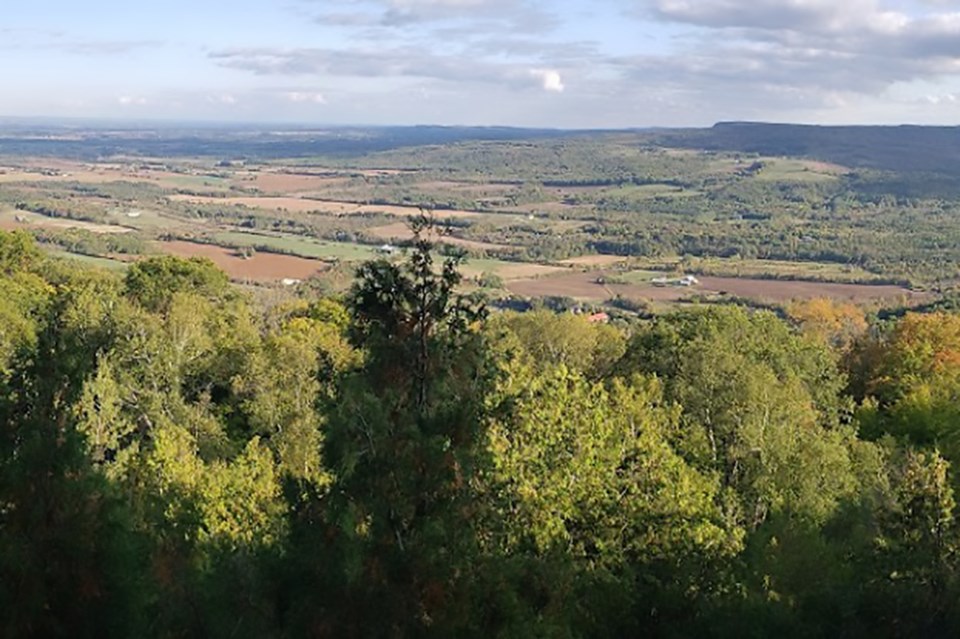This column was written by local resident Annette Sandberg.
Annette Sandberg grew up on the Blue Mountains section of the Niagara Escarpment, just three km west of Scenic Caves and she now resides in Collingwood. She is a local historian, researcher, and writer for the Gaslight Tour and the Grey Roots Museum, and guides people on interactive hikes through the land she writes about.
*************************
Today marks the 371st Anniversary of the day 300 Iroquois conducted a deadly raid against the Petun Wolf clan village Etharita (St. Jean), which took place Dec. 7, 1649.
Etharita was one of the nine Petun Villages located along the bottom ridge of the Blue Mountains, going from Craigleith to Duntroon.
This raid was one of many that raged across what is now Simcoe County during the Beaver Wars waged by the Haudenosaunee in their efforts to dominate the fur trade.
Etharita housed five or six hundred families, as well as the Jesuit missionary Father Charles Garnier, who had been assigned to Etharita the year prior. He was one of eight missionaries who had come to Huronia in 1639 to convert the natives to Catholicism.
On Dec. 5, 1649, after word had reached Etharita that a band of Iroquois warriors were heading toward their village, the Wolf Clan Petun warriors set out to meet them. Unfortunately, they were unaware that Iroquois had met up with a couple of wandering Hurons who had told them that the warriors had left the village undefended.
The Iroquois descended upon Etharita and began to burn it down, killing or taking prisoner the women and children who had remained. Those who managed to escape, ran to the Petun Village of the Deer Clan, located what is now Craigleith. Letters documented in the Jesuit Relations and Allied Documents of the Travels and Explorations of the Jesuit Missionaries in New France, 1649, Jesuit Missionary Paul Ragueneau wrote: “It was on the seventh day of… December (1649) toward three o’clock in the afternoon, that… the Iroquois appeared at the gates of the village” (of Etharita) (JR35:109).
When the Iroquois arrived, Father Garnier went straight to the chapel and gave blessings to the Petun Christians who were there, and exclaimed, “we are dead men now brothers! Pray to God and escape by wherever way you can!"
He then returned to the battleground to do his holy duties and gave absolution to those he came across and went to the burning homes to administer the waters of baptism to the dying children and adults. It would not be long before he would receive two bullet shots, one that pierced the upper part of his chest and the second that went through the lower part of his abdomen and lodged in his thigh. Then two final blows to either side of his temple by hatchet sealed his fate.
Two days later, the Petun warriors who had so bravely gone to battle the Iroquois away from their Village and families' harm, returned to find their homes burned and bloodied by the death of their loved ones. They spent half a day in deep silence, seated on the ground, without raising their eyes or even uttering a sigh. Father Garnier was found only steps away from his beloved chapel and had been stripped of all his clothing. After meeting the survivors at their neighbouring Deer Clan, they began the grim task of burying their dead then leaving Etharita to never return and forever sealing this day in Simcoe County history.
Today, the site where Etharita once stood is peaceful and still, and although it is on private land, you can hike alongside it through the Pretty River Valley Conservation Area. Etharita Site was designated a national historic site in 1982.
*************************


